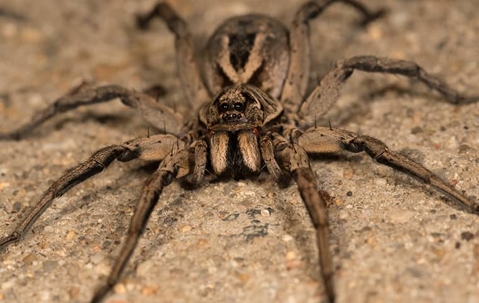Have you ever screamed or cringed at the sight of a spider in your shoe or on the wall? Does it give you nightmares and chills when you see a spider move? Well, many of us in our lifetime have spotted spiders either in horror movies, ghostly houses, or unknowingly inside our homes. Spider webs are sticky, and their hunting technique can be pretty dreadful. In the United States, you can spot almost all kinds of spiders, and generally, they pose no danger to people. Regardless of the mild nature of most spiders, we at Accurate Pest Control believe that two species in the western and southern United States can be a menace to people when accidentally disturbed. These are namely – the black widow and brown recluse. In this blog, we will help you identify some of the basic kinds of spiders and the possible risks spiders can have on your health.
1. Black Widow Spiders
As the name suggests, black widows are black and glossy with a revealing red hourglass shape on the bottom of their stomach. Young black widow spiders emerge orange and white, becoming darker in color as they grow old. Male black widow spiders seldom bite; females are violent and bite in defense, particularly when safeguarding their eggs. When a black widow bites, its symptoms include fever, increased blood pressure, sweating, and vomiting. Pain from a bite reaches a maximum in 1-3 hours. Death is unlikely if you seek immediate medical treatment.
2. Brown Recluse
These spiders are light to dark brown with a distinctive dark brown violin mark on their backside. The brown recluse spider also bites in defense, similar to the black willow. Their bite cannot be felt at first but can produce a stinging feeling and intense pain. A typical indication of a brown recluse spider bite involves uneasiness, fever, and trouble sleeping. Their bite can lead to an open, ulcerating aching which requires medical action.
3. House Spiders
House spiders are frequently yellowish-brown, having elongated abdomen, although their color can be highly erratic. These nuisance pests pose a moderately minor threat to humans, but they can bite when threatened.
4. Jumping Spiders
Jumping spiders are compact with short legs and are often mistaken for black widow spiders. They are black and covered with thick hair that is intensely colored. They bite in defense, but their bite is not toxic. This species is most likely to sprint from a human threat rather than attack.
5. Long-bodied Cellar Spiders
These spiders are pale yellow to light brown with long, skinny legs and a small body. These spiders don’t bite and therefore pose no threat to humans.
6. Wolf Spiders
Wolf spiders are typically dark brown with paler stripes, possessing long, spiny legs. Due to its appearance of having a large and hairy body, it can alarm some people. These can bite, but it’s rare unless they are provoked.
Whether these critters are harmful or not, nobody wants to have spiders in their homes. The most effective way to deter spider infestations is to eliminate any potential hiding places. These pests love taking refuge in dwellings and will drift toward dark, quiet nooks and crannies. Hence, it would help if you kept carports, attics, and bunkers tidy and clutter-free. Also, avoid leaving clothes/shoes on the floor and seal off any cracks or crevices around the home. It is sensible to contact a licensed pest control company in San Antonio to remove these creepy pests from your house altogether.
Are you dealing with a severe spider infestation and need a trusted pest control company in San Antonio, Texas? Call Accurate Pest Control’s licensed home pest control and commercial pest control experts today.

